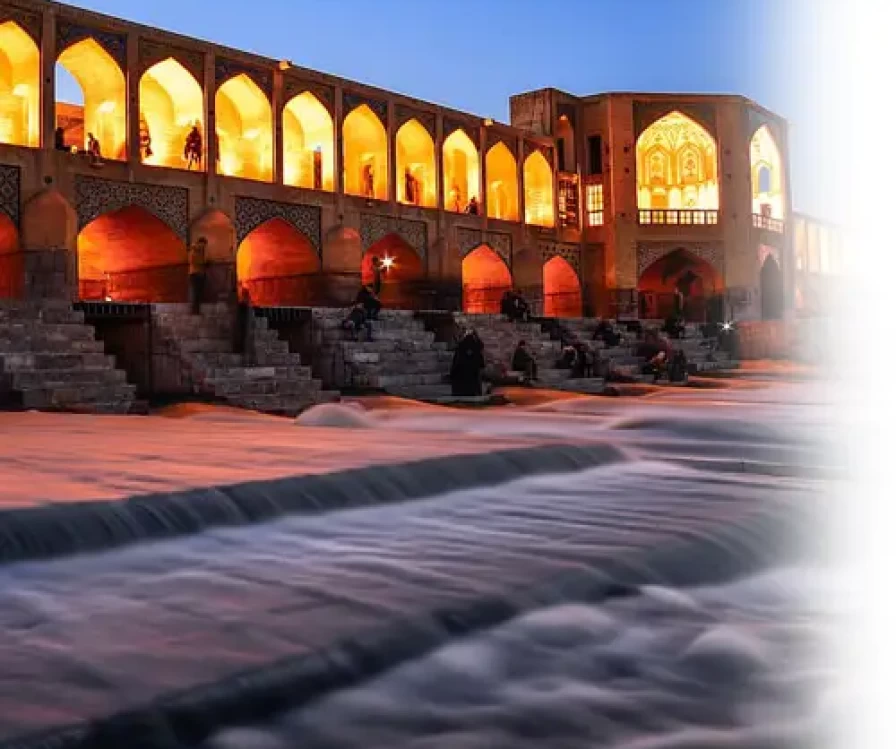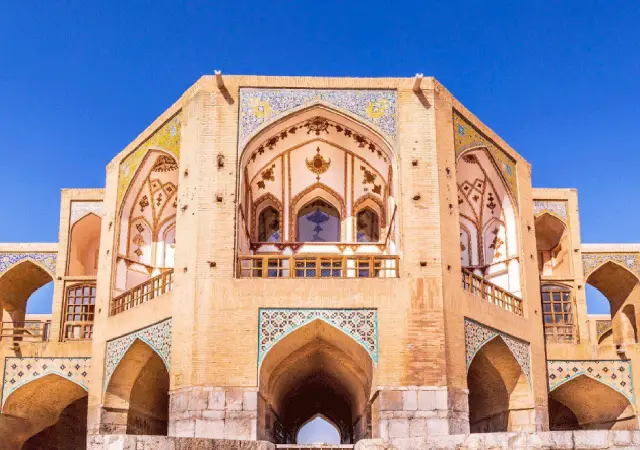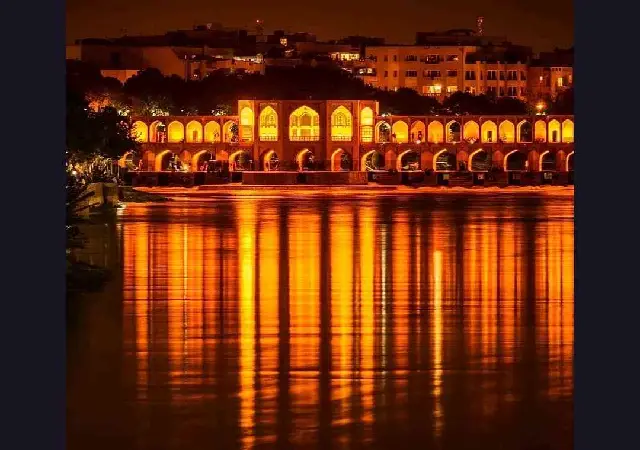
Khaju Bridge: Isfahan's Coziest and Most Decorated Span on the Zayandeh Rood





Khaju Bridge
Among the seven historical bridges gracefully arching over the Zayandeh Rood River in Isfahan, the Khaju Bridge reigns as the most beautiful, intricately decorated, and inviting. Adorned with vibrant tiles and artistic brickwork, its elegant arches, while smaller in scale than those of the 33 Pol , possess a unique artistic charm. During the Safavid era, this bridge served as a cherished retreat for noble families, and even the women of the royal court would gather here to revel in the tranquil river views and the picturesque scenery along the Zayandeh Rood itself. The Khaju Bridge , spanning approximately 133 meters in length and 12 meters in width, offers a more intimate experience compared to its larger counterparts.
Similar to Isfahan's renowned 33 Pol , the Khaju Bridge is primarily constructed from bricks and mortar. Mortar, a cement-like paste used to bind the bricks, functions almost like an epoxy resin. By carefully controlling the proportions of its ingredients, skilled workers could manage the curing time, ensuring a strong bond between each row of bricks and creating interconnected layers that resulted in a robust structure capable of enduring for centuries.
Mortar is a dynamic material integral to the construction of walls, structures, pools, and indeed, bridges. Its composition varies significantly, but the basic elements include clay, sand, lime, and often secret additives such as fruit juice (as a catalyst), goat hair (for internal reinforcement), egg yolk, turmeric, and numerous other ingredients whose exact recipes remain unknown today. Many master builders deliberately kept these formulations secret throughout their lives, and their knowledge died with them. As mentioned earlier, mortar is a "living" material, exhibiting physical and chemical reactions to its surrounding environment over time. It interacts with the weather, exchanging water with the ambient humidity. This absorption of humidity actually causes it to harden progressively over time. For instance, in Zanjan province, there is a wall constructed with a specific type of mortar that is approximately 1000 years old, and this mortar continues to strengthen and remains in excellent condition. Imagine a material improving in quality over a millennium! The mortar used in the Khaju Bridge was of such high quality that, even after 400 years in Isfahan's harsh climate, characterized by extreme temperature fluctuations between day and night in both winter and summer, it remains strong and intact. The Khaju Bridge truly is a gem within the beautiful city of Isfahan, and a visit to this iconic structure is an essential experience for all tourists exploring the historic downtown area.
The bricks used in the Khaju Bridge were selected for their exceptional quality, with master builders implementing rigorous quality control measures to ensure only the best were used. Even after four centuries, these bricks remain in excellent condition and shape, a testament to the effectiveness of their quality assurance processes.
The tiles adorning the Khaju Bridge are vibrant, with blue and white being the predominant colors. The blue hues symbolize the wealth of the society, and each tile was meticulously painted by Isfahan's most skilled artisans of that era. The superior quality of these tiles has allowed them to endure for 400 years and retain the potential to last for centuries more.
Two primary types of tiles were employed: "molavvan," which resembles a painting with intricate designs and varied colors, and mosaic tiles, created by assembling precisely cut pieces of colored tiles to form a larger design. Gypsum was used as an adhesive to secure these mosaic pieces, and the final step involved polishing the surface. These mosaic tiles were particularly expensive and required significant time and expertise to create, as seen in the beautiful Khaju Bridge of Isfahan.
In contrast to the 33 Pol , which served a more functional purpose as a vital connection across the river and continues to do so today, the Khaju Bridge was primarily intended for leisure and recreation. Wealthy individuals and the royal family would utilize the bridge's ivans (alcoves) to enjoy the river views and the surrounding scenery. While sharing a similar structural concept with the 33 Pol , the Khaju Bridge exhibits slightly different forms in its constituent arches. Interestingly, both bridges bear a resemblance in their arch design, but closer observation reveals numerous distinct differences between them.
As Sanapersian tour and travel service providers, we highly recommend taking the time to appreciate the intricate details and inviting atmosphere of the Khaju Bridge during your visit to Isfahan and if you want to visit what is Isfahan famous for , contact us . Its beauty and historical significance make it a truly special place to experience.
Contact Us
+989054577261